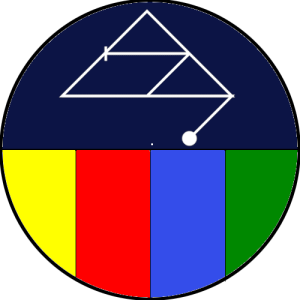We’ve spent the last few days exploring your sacred space, simple tools, and the living forces of the elements. Now, let’s look at two of the biggest players in Wiccan practice—the Moon and the Sun. These two lights in the sky are more than just celestial bodies; they’re the clocks and calendars of Wicca, guiding the rhythm of ritual, celebration, and magic.
The Sun: Turning of the Year
The Sun gives us the cycle of the seasons, the great wheel that turns through planting, growing, harvesting, and resting. In Wicca, this cycle is marked by the Wheel of the Year—eight Sabbats, or seasonal festivals, that celebrate the dance of light and dark.
Yule (Winter Solstice): The rebirth of the Sun, the longest night of the year.
Imbolc (early February): First stirrings of spring, hope, purification.
Ostara (Spring Equinox): Balance of day and night, fertility, new growth.
Beltane (May 1): Celebration of passion, life, and union.
Litha (Summer Solstice): Longest day, peak of light and strength.
Lammas/Lughnasadh (August 1): First harvest, gratitude, abundance.
Mabon (Autumn Equinox): Balance again, harvest home, preparation for winter.
Samhain (October 31): Ancestor night, turning of the year, honoring death and rebirth.
These festivals don’t just honor the Sun’s journey—they mirror our own. The waxing and waning of daylight reflects the cycles of growth, fullness, decline, and renewal in our lives.
The Moon: The Month in Miniature
If the Sun sets the big stage, the Moon offers a more intimate rhythm. Wiccans often follow the phases of the Moon for magical timing and personal reflection.
New Moon: Beginnings, planting seeds of intention, fresh starts.
Waxing Moon: Growth, building energy, drawing things toward you.
Full Moon: Peak power, manifestation, celebration, gratitude.
Waning Moon: Releasing, banishing, letting go, reflection.
Dark Moon (just before New): Rest, stillness, deep inner work.
Every month, the Moon carries us through this full cycle. Many Wiccans celebrate Esbats—rituals timed to the full moon or sometimes the new moon. These are chances to reconnect, recharge, and do magical work aligned with the lunar current.
The Dance of Sun and Moon
Wicca honors both the Sun and the Moon, often seeing them as symbols of divine polarity—the Sun linked with the God, the Moon with the Goddess. But remember, these are metaphors, not rules. The Sun can be nurturing, and the Moon can be fierce. Some traditions flip or blend these associations. What matters is recognizing that life is a dance of cycles: day and night, summer and winter, light and shadow.
By aligning yourself with these rhythms, you begin to flow with nature instead of against it. That’s one of the core gifts of Wicca—it invites you to live in harmony with the natural tides of energy.
Traditional Ritual vs. Simple Practice
Traditional approach: Many Wiccans hold full Sabbat celebrations for the Sun’s turning and Esbats for the Moon. These can be elaborate rituals with circles, invocations, seasonal decorations, and shared feasts.
Simple approach: Step outside tonight and just look at the Moon. Notice what phase she’s in. Whisper a greeting. On the next Sabbat, eat a meal of seasonal foods with intention, even if you don’t do anything else. A bowl of apples at Mabon or lighting a candle on the longest night at Yule is a ritual in itself.
A Simple Practice for Today
Tonight, if you can, go outside and find the Moon. If it’s cloudy or hidden, no matter—just imagine where she is. Notice her phase: is she growing, full, shrinking? Take a few breaths and ask yourself what that phase mirrors in your own life. Are you beginning something new, building momentum, celebrating a high point, or letting something go?
During the day, notice the Sun’s journey across the sky. Where is it at dawn, noon, sunset? How does it color the air and change your mood? These simple acts of attention are the heart of living in sync with the celestial cycles.
Journaling Prompt
Write about how you feel when you look at the Moon or Sun. Do you feel comforted, energized, inspired, or something else? Which one do you feel more naturally drawn to?
Then, note today’s Moon phase. Write about how it might reflect something happening in your life right now.
Closing Thought
The Sun and Moon are our oldest teachers. They rise and set, wax and wane, no matter what else is happening in our lives. By watching them, we learn patience, trust, and flow. You don’t need charts or apps to begin—just your own eyes and awareness.
You now know how Wiccans mark both the great cycles of the year and the intimate cycles of the month. Tomorrow, we’ll explore the question of divinity itself—God, Goddess, Spirit—and how Wiccans approach the sacred.


